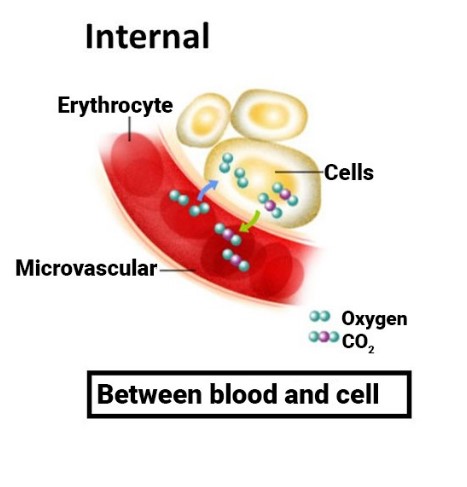Internal Respiration Definition
During internal respiration, oxygen diffuses from the blood into the interstitial fluid and into the cells. The waste and carbon dioxide are also diffused from the cells to the blood in the other direction. Blood cells release oxygen when the oxygen concentration in capillaries of blood vessels is low, which is usually the case.
As a result, gases and other solutes exchange between the plasma and the interstitial fluid during internal respiration. In cellular respiration, oxygen is converted into ATP, a molecule that cells use to store energy, but also creates carbon dioxide.
When the lungs, gills, or other tissues exposed to the outside exchange oxygen and carbon dioxide, this is known as external respiration. The act of breathing involves pulling lungs into or out of the lungs, or moving water over the gills.
Related Biology Terms
- During respiration, oxygen, carbon dioxide, and other solutes are exchanged between the blood and environment to continue producing energy.
- Air or water is drawn into the lungs or over the gills by muscles.
- In external respiration, solutes are exchanged with the external environment through special tissues.
- Using oxygen to extract energy from organic molecules is called cellular respiration.

